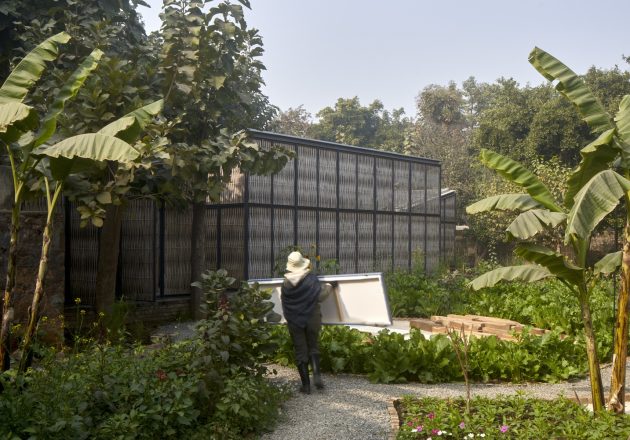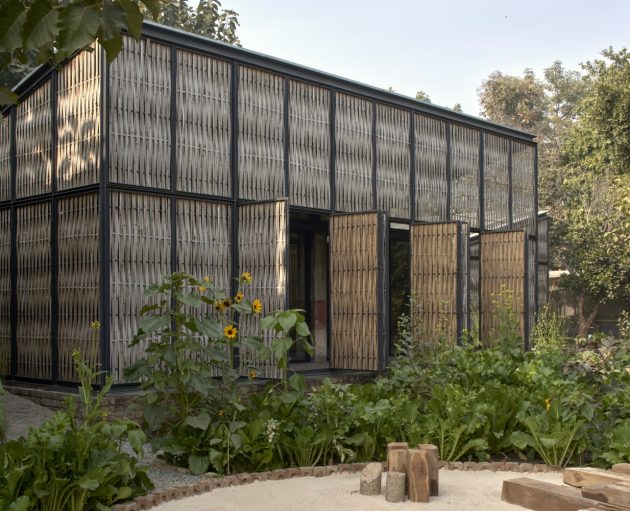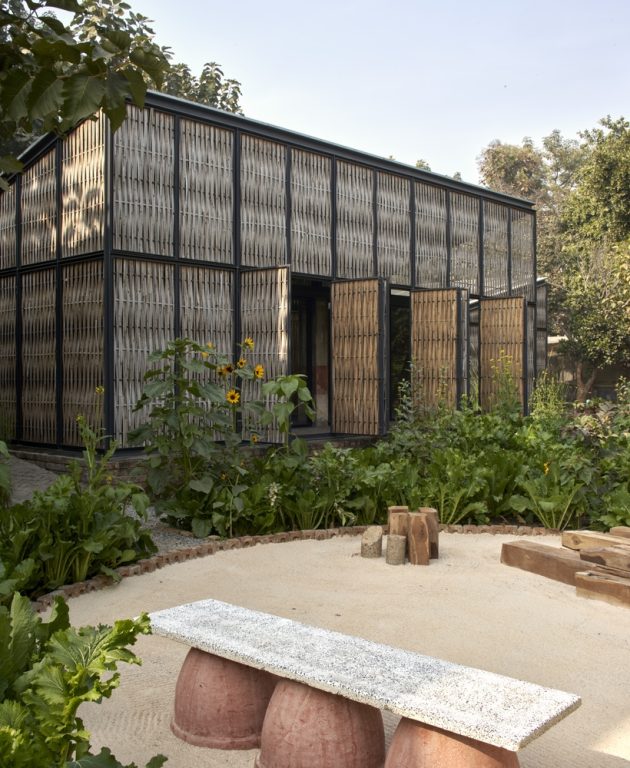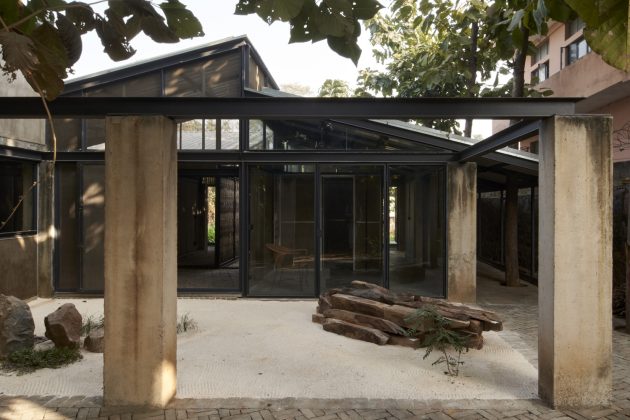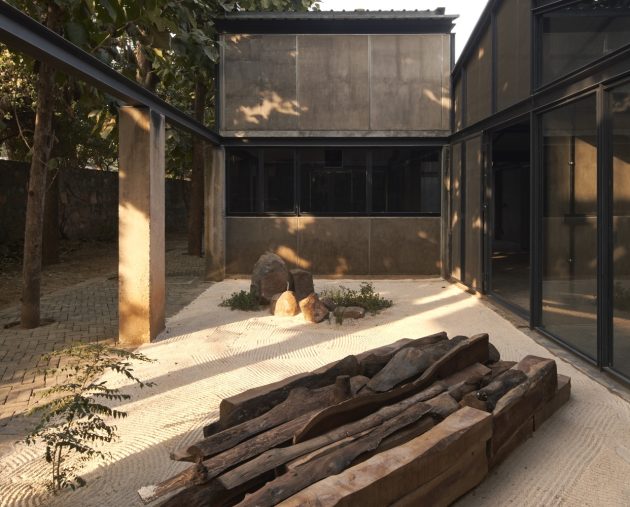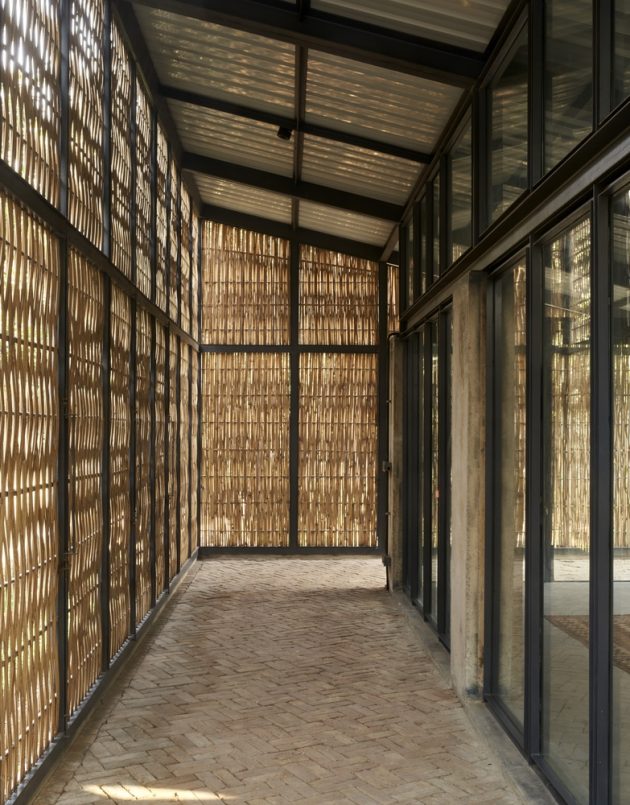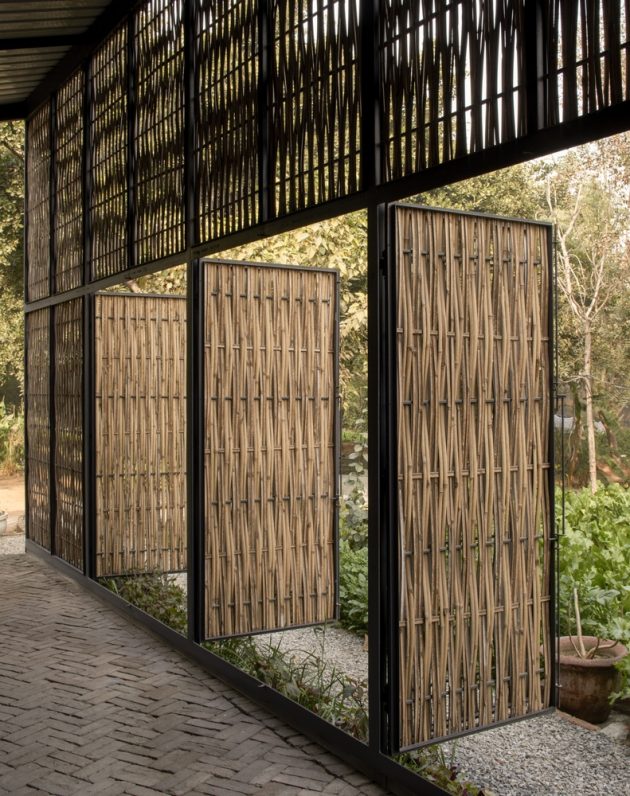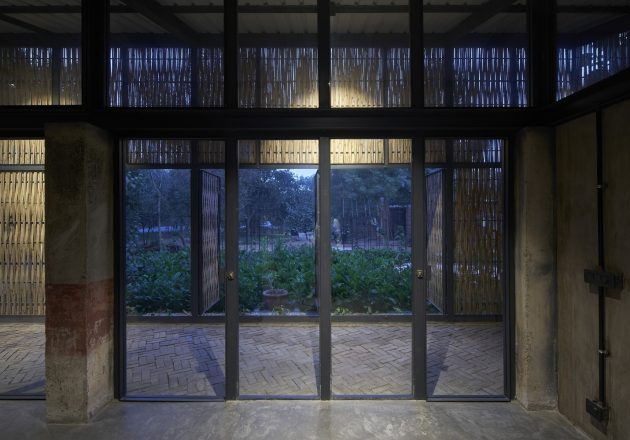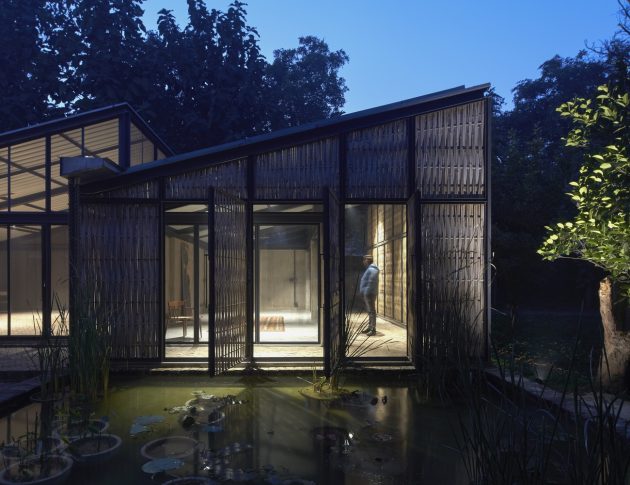Project: Artist Residency Farm8
Architects: Studio Array
Location: New Delhi, India
Area: 2023
Year: 6,458 sf
Photographs by: Edmund Sumner
Artist Residency Farm8 by Studio Array
Welcome to Farm 8, an artist’s haven nestled in the heart of New Delhi’s urban landscape. What began as an artist’s studio transformed into a 5-acre oasis of sustainable farming and permaculture practices, fostering creativity within nature’s embrace. Studio Array seamlessly marries the existing foundation with innovative design, preserving the past while embracing the future. A harmonious blend of steel, glass, bamboo, and wooden elements dance with the site’s old structure, embodying an organic weave between indoors and outdoors. With its sloping roofs and semi-open spaces, Farm 8 offers a sanctuary where artists connect with nature’s rhythms, blurring boundaries between private and public realms. Here, architectural innovation becomes a serene ode to the verdant landscape, inviting visitors to experience creativity in harmony with the greens that envelop it.
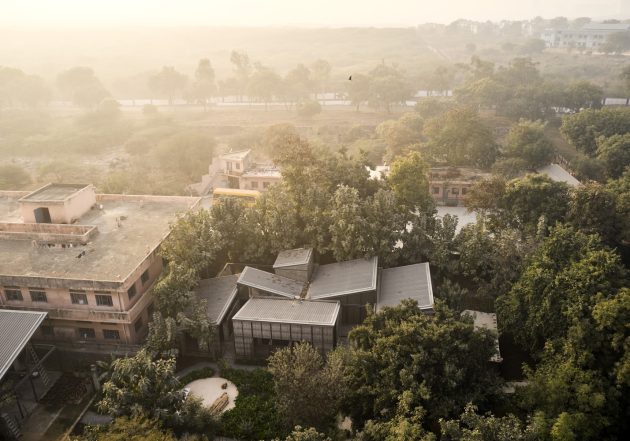
Located in Arjanghar, New Delhi, The artist residency, Farm 8 is nestled in a verdant oasis, within an otherwise densely packed urban village. Almost a decade ago, the clients, Ranbir and Rashmi Kaleka intended to use the site as an artist’s studio space for themselves. Foundations and columns were thus cast at the time, unfortunately, the on-site work was stalled for unforeseen reasons. In 2020, with evolving needs and lifestyles, the artist-clients began using the 5-acre farm for sustainable farming and experimental permaculture practices as part of an artist collective called Farm8. The collective includes artists Ranbir and Rashmi Kaleka, the Late Vivan Sundaram, Bharti Kher, Subodh Gupta, Jagannath and Pranati Panda, Jogen Chowdhury, Shambavi Singh, Meera Menezes, Rajiv Bhargava, Anil Chandra, Manoj Arora, Eegje Schoo, and the late Sanjeev Sinha.
Studio Array was brought in with a renewed intention of crafting an escape that would allow visiting artists to connect with the natural habitat, whilst disconnecting from their busy and demanding urban lives. The architects, instead of starting from a tabula rasa, intentionally resolved to continue working on the half-done canvas of columns and foundations that existed on-site. Perpetuating the client’s permaculturalist ideology, the architects sought to reduce waste and retain and wrap around the infrastructure that was already built on-site years ago. The artist’s residency therefore ‘caps’ and ‘envelopes’ the old structure while creating a structural contrast by intervening with lightweight steel, glass, bamboo, and wooden drywall construction. The residency plans to host artists from India and abroad.
A weave between the old and the new, the outdoor and the indoor, and the public and the private became the paramount idea for the architects. Emulating the experience of sitting under a tree, semi-open spaces were carved out of the existing column grid structure to offer a sense of protection, without creating enclosures. Wrapping the old columns is a lightweight steel structure with insulated roofs sloping in distinctive directions to respond to functional and contextual demands. The modular sloping roofs are consciously maneuvered to create a myriad of spatial scales that ‘dematerialize’ the built mass. The roofs forge a humble and passive envelope, harmonizing effortlessly with the greens around. Deviating from an orthodox sloping roof, the architects use the roof as a structural gesture to constantly elevate and draw attention to the verdant landscape outside of the built form.
Diverse volumes and scales were explored within organically planned modular blocks to blur further boundaries between the inside and the outside and create a strong functional narrative. Double-height, semi-open verandahs were woven in as extensions to private quarters. These verandahs offer a volumetric and perceptional interest, allowing users to seamlessly traverse between private and public spheres, both spatially and psychologically. Large uninterrupted openings in the living quarters have been privatized by layering hand-woven bamboo screens, contextualizing natural materials found in farm environments. The bamboo screens will age and change color over time, as an ode to the unforgiving aging process, mimicking and inviting nature to take over for years to follow. The brick flooring sans mortar used in the semi-open pavilions is also designed to age and desaturate with time, with the possibility of allowing grass, weeds, and the landscape to enter the built space. Likewise, lime, wax-stained dry walls and hand-casted and hand-polished IPS cement flooring in the living quarters add a much-needed softness to the private spaces as one transitions from the outdoors to the indoors. In an attempt to glorify its natural habitat, studio Array crafts an unassuming, yet contemporary abode, gently emulating the greens it is perched within.


